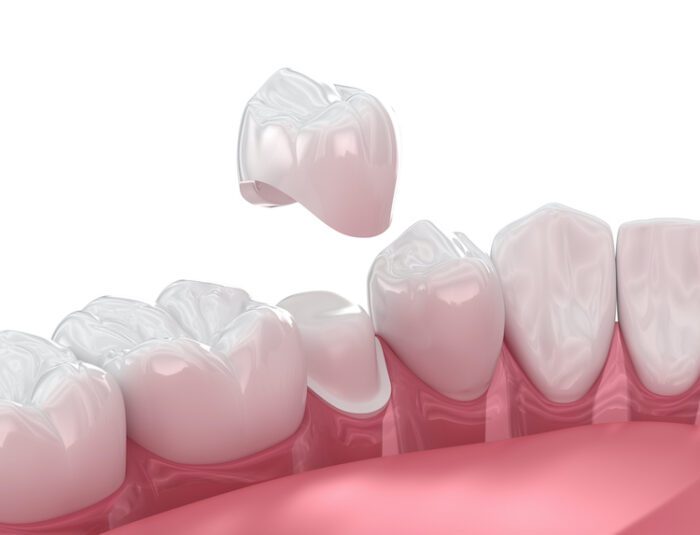Dental crowns are a common solution for restoring damaged teeth. They help preserve the tooth’s structure, protect it from further decay, and improve its appearance. Many people feel anxious about dental procedures, especially when they involve multiple visits. Understanding the process of getting a dental crown can alleviate some of this anxiety.

Initial Consultation and Examination
The journey to receiving a dental crown begins with an initial consultation. During this visit, your dentist will conduct a thorough examination of your mouth. They will assess the tooth that requires the crown and evaluate its condition. This assessment often includes taking X-rays to examine the tooth’s roots and the surrounding bone structure. The X-rays help the dentist determine the extent of any decay or damage. They also ensure that the tooth’s roots are healthy and can support a crown.
During the consultation, your dentist will discuss the procedure with you in detail. They will explain why a crown is necessary and what benefits it will provide. You will have the opportunity to ask questions and express any concerns. Your dentist will also discuss the different materials available for crowns, such as porcelain, metal, or a combination of both. They will help you choose the best option based on your needs and preferences.
Preparation of the Tooth
Once you and your dentist have agreed on the treatment plan, the next step is preparing the tooth. The dentist will begin by numbing the area around the tooth with a local anesthetic. This ensures that you feel no pain during the procedure. Once the area is numb, the dentist will proceed to reshape the tooth. This involves removing any decay and filing down the tooth to create space for the crown.
The amount of tooth structure removed depends on the type of crown being used. This step is crucial for ensuring a proper fit for the crown. The dentist must carefully shape the tooth so that the crown can sit comfortably and securely over it. The preparation process may take some time, especially if the tooth is severely decayed or damaged. In some cases, a core build-up may be necessary. This involves adding material to the tooth to provide a solid foundation for the crown.
Impressions and Temporary Crown
After the tooth has been prepared, the dentist will take an impression of it. This impression is used to create a custom crown that fits perfectly over your tooth. The dentist will also take impressions of the opposing teeth. This ensures that the crown aligns properly with your bite. The impressions are sent to a dental lab, where skilled technicians will craft your permanent crown.
While waiting for the permanent crown, the dentist will place a temporary crown over the prepared tooth. The temporary crown protects the tooth and maintains its function. It also prevents the surrounding teeth from shifting out of position. Temporary crowns are usually made of acrylic or composite material and are not as durable as permanent crowns. During this time, you should avoid sticky or hard foods that could dislodge the temporary crown. If the temporary crown becomes loose or falls off, contact your dentist immediately.
Fitting the Permanent Crown
Once the permanent crown is ready, you will return to the dentist for the fitting. The dentist will remove the temporary crown and clean the tooth thoroughly. They will then place the permanent crown over the prepared tooth. The dentist will check the fit and make any necessary adjustments. They will ensure that the crown aligns with your bite and feels comfortable and provide instructions on how to care for your new crown.
Potential Complications and Solutions
While dental crowns are generally safe, complications can arise. Some patients experience sensitivity to hot or cold temperatures. This sensitivity usually subsides over time as the tooth adjusts to the crown. If sensitivity persists, contact your dentist for advice. They may recommend a desensitizing toothpaste or other treatments.
In rare cases, the crown may become loose or fall off. This can happen if the cement weakens or if the underlying tooth structure changes. If your crown becomes loose, contact your dentist immediately. They can re-cement the crown or recommend a replacement if necessary.
At Capital Region Complete Dental Care & Implants, Dr. Frederick Marra and his team are dedicated to providing a stress-free dental experience. If you need a dental crown, they’re here to help. Contact their office today to schedule a consultation and learn more about the restoration process.
